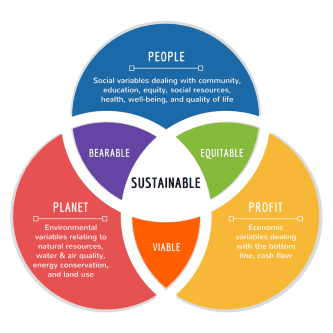Different functions serve different purposes in a business’ daily existence. Some disciplines and roles in the organization are important for internal bodily function, whilst others have more surface value. While some functions may seem more important than others, they’re really all interconnected, interdependent, and mutually necessary to function as one corporate organism.
If we continue on this slightly far-fetched analogy just a few steps further…
One could argue that Sales, Marketing, and Service is a corporate entity’s face and body; exuding surface value in the form of outward success, growth, and achievement. Finance, HR, and Operations would be the bones and muscles, building a sturdy skeleton, frame and holding everything — on the surface — together. Logistics and Supply Chain could easily be the veins, arteries, and capillaries ensuring that there is a continuous flow to the various limbs of any corporate organism.
The Vital Organs of Procurement
Contrary to popular opinion, I would label Procurement as your vital organs.
Procurement is a central and reliable artery that continues to metabolize, pump and supplement various roles of the business, inconspicuously, in order to ensure that other parts of the body have what they need to do their job well.
Just like humans, businesses and business functions evolve in their anatomy.
During the more recent years procurement as a discipline has taken a more central role in organizational strategy and as a driver of top-line growth. Procurement, in the modern context, isn’t doing its job as a vital organ if its work is simply polluting the very air that a business — or society at scale — breathes back in. For this reason, procurement has had to evolve from a role that simply creates savings and manages supply, to a role that does so in a socially responsible and environmentally conscious way. In order for procurement to remain a vital part of any business’ organism, it’s important that procurement organizations adopt Sustainable Procurement as the dominant practiced discipline.
What Is Sustainable Procurement, Really?
It’s no secret that corporate sustainability and CSR have exponentially taken the forefront in the corporate strategy of global brands. This trend is, in large part, due to external consumer demands on supply chain transparency, visibility, and accountability. Consumers today want to know what they’re buying, where they’re buying it from and this increases a need for product and environmental stewardship. Sustainable business practices in global supply chains are no longer a nice to have, but a must-have.
Sustainable Procurement helps you not just talk about Sustainability, but be about it.
Read more about Procurement & Sustainability: Your company's Yin & Yang
As defined by CIPS, Chartered Institute of Procurement & Supply, “Sustainable procurement is the act of adopting social, economic and environmental factors alongside the typical price and quality considerations into the organisations handling of procurement processes and procedures” (CIPS.org).
As defined by UNDP, United Nations Development Programme, “Sustainable procurement means making sure that the products and services we buy are as sustainable as possible, with the lowest environmental impact and most positive social results” (undp.org).

5 Key Sustainable Procurement Practices
1. Supply Chain Compliance
Ensuring compliance with International and Domestic Standards, CoC, Policies, and Legislation (covering various areas: environmental, health & safety, quality, human rights, child labor, anti-corruption, business ethics, capacity/contingency, GDPR, cybersecurity, etc.)
2. Supply Chain Visibility
Supply Chain tier-mapping, supply chain visibility, and traceability
3. Sustainability Performance & Supply Chain Reporting
In line with international reporting standards (GRI for example).
4. Supplier Evaluations
Incorporation of sustainability criteria into sourcing evaluations (Systematic within RFx, Onboarding & ongoing supplier evaluation).
5. Spotting Sustainability Opportunities
Locating opportunities to remove harmful products, components, and/or supplier entities from the supply chain.
Learn more about how Kodiak Hub empowers you to drive ESG & Sustainability throughout your supply chain.
5 Benefits of Sustainable Procurement in Practice
1. Supply Chain Resilience & Risk Reduction
Ensure visibility, compliance, and governance within supplier networks to spot potential risks and avoid negative impact as a result of sourcing from a negligent supplier. Read more about this in this piece on SRM Software
2. Decreased Costs
Overhead cost savings created from better management of natural resources & better product stewardship can reduce TCO.
3. Revenue Growth
Consumers support brands that adopt sustainable business practices as a part of their core business culture. This can lead to increased brand loyalty.
4. Future-Proofing
“Developing sustainable procurement practices allows the organization to future proof themselves against scarcity in supply and changes in social, economic and environmental factors” (cips.org).
5. Product & Supplier-Enabled Innovation (SEI)
Stronger and more collaborative means of communication from the beginning of a supplier relationship harnesses trust and breeds opportunities for innovation.
The Heart of Sustainable Procurement
If Procurement is a business’ vital organ, then at the heart of any sustainable procurement strategy and practices lie one common denominator; Supplier Relationships.
None of the practices or benefits listed above are possible without having a Supplier Relationship Management (SRM) program, processes, and/or systems in place.
“The key to a successful implementation and combination of CSR and SRM is, first of all, to start viewing CSR as a proactive approach as opposed to doing it to fulfill a compliance purpose. In doing so it is important to set clear goals and objectives” (SpendMatters 2015).
Integrating CSR & Sustainability objectives into an SRM program from the start of supplier relationships aligns buyer & supplier parties on mutual goals, objectives, and overall corporate values before entering into a collaboration. SRM provides a framework where initial buy-in and understanding for consistent compliance, governance, and mutual improvement of buyer-supplier collaborations breeds better opportunities for savings & revenue growth during the course of the collaboration. SRM programs that work well aren’t perceived as reactionary governance or necessary-evils, but opportunities for creating shared stakeholder value.
To paraphrase Bob Lutz, former President of Operations at Chrysler:
"Sometimes all you need is your suppliers’ brainpower, not their margins".
Sustainable Procurement is only as impactful as the adoption level that exists in a buying organization and its supplier network. It requires stakeholder buy-in, and that means leveraging SRM practices to ensure your suppliers feel like partners and not just vendors. It’s important to spot suppliers that can be early adopters, segment/classify suppliers based upon engagement, and continue to create opportunities that increase supplier network trust. Implementing a well-oiled SRM program can serve as a vehicle for making a shift towards sustainable procurement practices; one that is a systematic and consistent proponent of positive change.
Do you hear that?
I think it’s the heartbeat of your business!
Read more on How a Supplier Management System can help improve your business and how it can can help you realize sustainable procurement.












